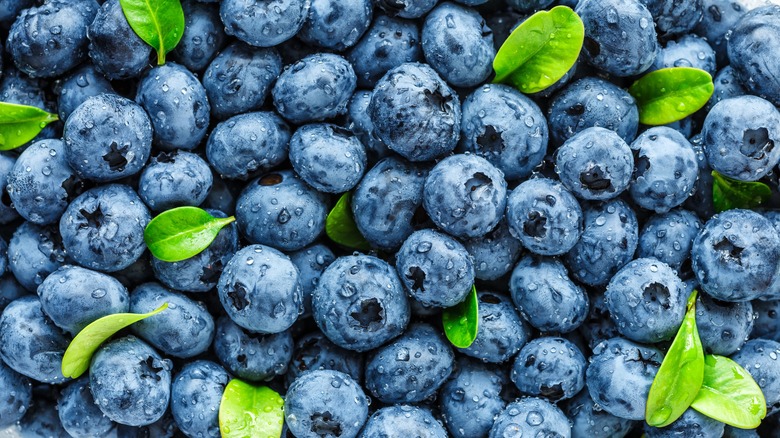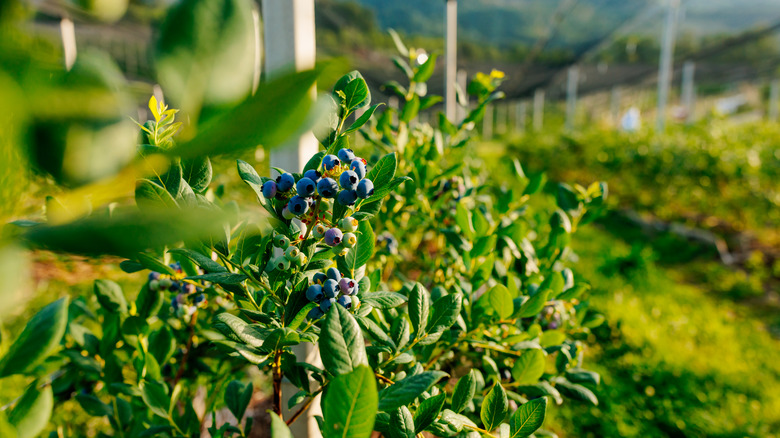The US Produces The Most Blueberries Worldwide By A Landslide
The demand for blueberries has staying power, and there's little mystery behind this fruit's popularity when you consider its combo of sweet, tart taste and health benefits. Blueberries boast antioxidants, minerals, and vitamins such as vitamin K, which is important for your heart. Plus, there are endless ways to use blueberries, from baking recipes for blueberry scones, muffins, and pies to more unexpected blueberry uses, like turning them into simple syrups for cocktails, salad boosts, and grilled cheese game-changers.
The average American ate 2.5 pounds of blueberries apiece in 2020, according to the International Blueberry Organization (via Rural Migration News). So, where do all those blueberries come from? As it turns out, for Americans, it's likely that these little indigo fruits aren't crossing any oceans to reach them. Blueberries are native to North America, so it makes sense that the United States is the world's largest blueberry producer. In fact, over a whopping 200,000 tons of blueberries are grown and harvested in the U.S. every year, and the country leads a handful of other serious blueberry growers and exporters throughout the world.
Canada comes in second, followed by Chile, Peru, Spain, Mexico, and Poland. What some people may not know is that there are actually many different types of blueberries. While differences between varieties like lowbush blueberries and northern blueberries make some of the fruits ideal for jams and others perfect for muffins, this natural variance also makes different species and cultivars better suited to certain climates. This explains the wide range of countries growing, harvesting, and supplying this fruit. Even the bigger producers, though, don't rival America's 200,000-ton status.
These are the U.S. states producing the most blueberries
The majority of blueberries grown in the United States are highbush and lowbush blueberries. The rest are a mixed bag of different cultivated varieties. Certain states really lead the pack with their output, too. The top growers in the U.S. are Oregon, Washington, California, New Jersey, Georgia, Michigan, Florida, and North Carolina. But, while it's not in the top-grower group in terms of actual numbers, Maine is arguably the American state that's most associated with blueberries.
Wild blueberries have been a part of Maine's food traditions since the 16th century, and a specific kind of blueberry has been cultivated there since the 1800s. Today, the blueberry is Maine's official state berry and is a part of Maine's identity, not to mention its cuisine. In the U.S. and Canada, the blueberry's harvest season extends from April until the end of September. Different varieties are ripe for picking at different times in that window — for example, those famous Maine blueberries are at their best and readiest in August.
From October to March, that's when we might find blueberries from other countries in our grocery stores, as Southern Hemisphere regions are having their own blueberry harvest seasons during that period. Even further extending the blueberry's life all year round, most of the world's blueberry producers don't just supply fresh blueberries, but dried blueberries, too. Dehydrated blueberries can last for up to 18 months. Between America's abundant supply and other producers with differing harvest seasons, we get to enjoy delicious blueberries year round.

